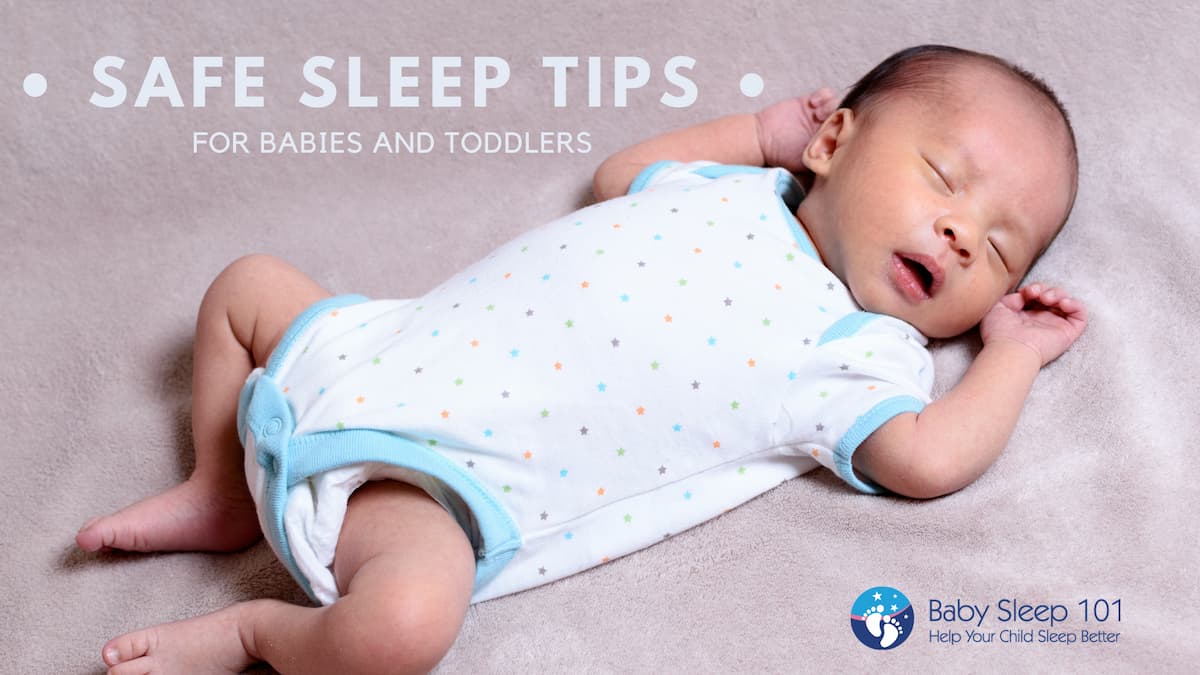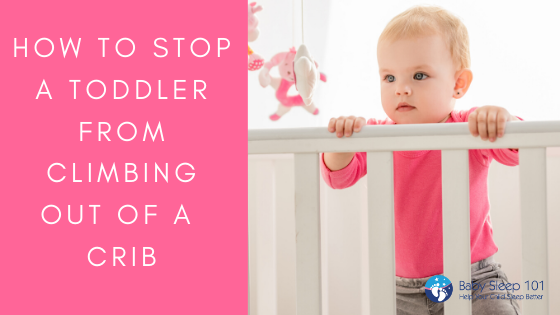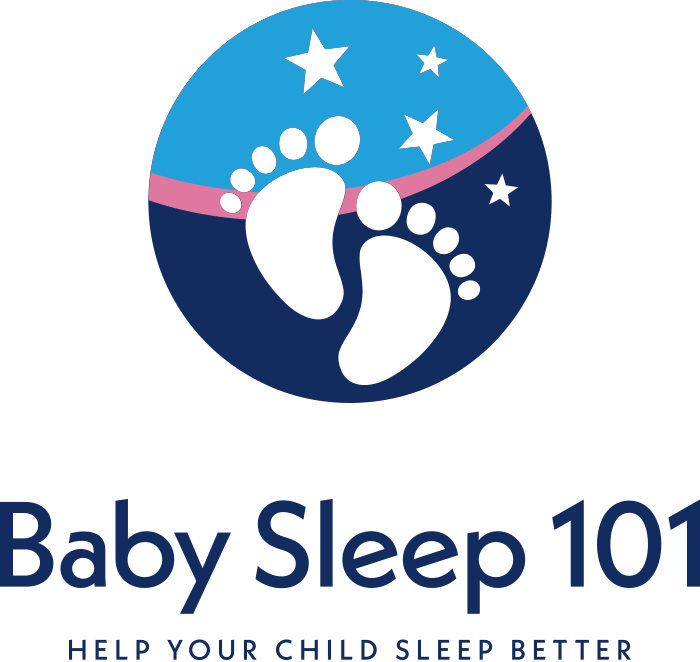Getting enough sleep. Sleeping through the night. Avoiding a sleep debt.
As much as we try to not focus on it, having consolidated night sleep is for both parent and child, feels like winning some sort of prize.
But it can be hard to come by.
And getting sound advice, even from medical professionals, can sometimes be misguided.
For instance, when parents visit their child’s pediatrician and are asked about how sleep is going, and they say “not great”, my clients tell me often the response will be; “you just have to let them cry”.
Without context, a proper sleep schedule in place, or without sleep hygiene habits being practiced, this is a recipe for disaster.
Want to get your baby or toddler on a better sleeping routine?
Download your free copy of
Baby Sleep Guides or Toddler and Preschooler Sleep Guides
Sleep Training Doesn’t Always Work
The problem lies in the fact that helping a child to sleep through the night is not limited to just one factor. And by extension, it’s not caused by one single issue.
This is why the idea of sleep training can and often does fail when parents try it.
It’s not that they picked the wrong method, it’s that they didn’t understand why the child was waking to begin with.
And that’s no ones’ fault. As parents, we aren’t taught much about our kiddo’s sleep!
In fact, even pediatricians have limited hours of training in regards to pediatric sleep. And my guess is, the focus is not about schedules and sleep windows. 😉
Having three kids myself, (currently, my youngest is 11 months old) and helping hundreds of families achieve better sleep, I’ve seen this time and time again.
Let’s clear up any misunderstanding so our families can become well-rested and healthy.
So what IS a sleep debt?
Sleep debt, sleep deprivation, exhaustion, over tiredness.
They are all basically the same thing.
A sleep debt is the difference between how much sleep a child should be getting and how much they are actually receiving.
A (sleep needs) minus B (actual sleep quantity) = Sleep Debt
The sleep debt can be acute/recently acquired, or long term, chronic-lasting weeks or years.
If we think of sleep health similar to having money in the bank, then when our children (or ourselves) miss out on the required amount of sleep that their body needs, it’s like taking money out of the bank.
They now have a sleep deficit, or a sleep debt.
Side Effects of Sleep Debts
One of the MOST important factors, but yet the least known fact, is that sleep debts cause MORE sleep problems.
Mistakenly, I’ve heard my clients be advise (even from their pediatricians) to keep a child awake LONGER, in order to help them sleep better at night.
If you want your kiddo to sleep better, then please don’t follow this advice.
In general, to quote the famous pediatric sleep researcher, Dr. Mark Weissbluth; “sleep begets sleep”.
That is, the more a child sleeps, the better they will sleep.
Yes, there are limits to this, but when we are dealing with overtired babies, toddlers and preschoolers (which, if you’re reading this blog, you probably are), then we really want to work at filling up their sleep bank.
To summarize, here is what can occur with sleep debts
- Frequent night wakings (not related to hunger)
- Increased crying (during day, before and after sleep periods)
- Short naps
- Waking after 20-30 minutes of sleep
- Resistance/protesting to going to sleep
- Difficulty falling asleep
- Early morning wake ups
- Bedtime battles (toddlers and preschoolers)
- Crankiness
- Clingy
- Unable to play independently
- Refusal to eat
- Easily falling asleep in highchair, car seat-anywhere other than in crib or bed
- Risk of impaired health, immune function and memory
Fixing a Sleep Debt
In order to feel well and to maintain a strong immune system and overall health, this must be payed back.
Generally the thought is that you can never fully repay the sleep debt. Once that sleep is lost, it’s gone forever. But, it is possible to reverse the effects.
We start by getting our children to bed at the perfect time. Not too early and not too late.
How do we accomplish this? By following their *initial* sleep cues.
The trick here is to know what to look for.
If I asked you what does your child do to indicate when they’re ready for a nap or bedtime, you may say yawning, eye rubbing, or getting fussy.
But for the vast majority of children, these are their secondary tired cues. They are signals that indicate that your child is already approaching a state of overtiredness.
Instead, what we should look for is much subtler, much less obvious.
Initial Tired Cues; “I’m Getting Sleepy”
For babies, watch for the following signs…
- Zoning out
- Turning away from caregiver
- Loosing interest in toys
- Quieting down
- Eyes looking glassy
- Looking relaxed and calm
For toddlers, watch for the following signs…
- Wanting to cuddle
- Sucking fingers/thumb/pacifier
- Lying down or wanting to have a “rest” during playtime
- Finding favourite blanket or stuffed animal
- Getting quiet
- Starting to whine/get fussy
When you see these indicators, you need to immediately respond and start their wind down process for sleep. This will give you the best chance of having minimal fussing and long, deep sleep.
Secondary Sleep Cues; “I’m Getting Overtired”
If you miss the initial sleep window, you will likely start to see overtired cues.
Since a sleep debt is building, you will likely have to work harder at helping your child settle down. That’s ok! Do what you need to do to help them.
For babies, watch for the following signs of overtiredness…
- Yawning
- Red under or around the eyes
- Skin around eyebrows turning pink/red
- Fussing
- Crying
- Jerky or erratic limb movements
- Arching when being held
- Fighting/resisting going to sleep
For toddlers, you will notice these cues when they are becoming overtired…
- Defiant
- Grumpy
- Meltdowns
- Temper Tantrums
- Increased silliness or clumsiness
- A burst of energy
- Hyper
- Demands for attention
Moving Forward And Avoiding The Sleep Debt
To avoid the same problem at the next sleep period, make a note of how long they were awake for prior to seeing the overtired cues.
Start documenting or sleep logging with little notes for yourself on their temperament and mood before sleep.
This will help you to start seeing patterns and anticipating in advance when they will be ready for nap or bedtime.
How Do I Know When My Child No Longer Has A Sleep Debt?
Once you have been able to identify your child’s initial sleep cues and are able to get them onto an age-appropriate schedule, the next question is when are they all caught up?
We often look to the child’s mood, temperament and patterns in sleep, as indicators of sleep health.
A few questions to ask;
- Is my child waking less at night?
- Is my child waking up in the morning happy and refreshed?
- Is the morning wake up time after 6:00 am?
- Are naps roughly two sleep cycles long? (One cycle is roughly 45 mins, age-dependent)
- Is the nap consolidated, with no significant wake ups in between cycle transition?
- Is my baby (over 4 months) sleeping a long stretch in the evening before their first feed?
- Is my toddler or preschooler sleeping through the night?
If you answer “yes” to most of these questions, then it’s likely that your child is getting back on track.
It does take awhile to undo the effects of sleep deprivation, so please be patient with them and stick to your routine.
If you need more help or guidance, I can help you! I offer mini-consults (30 or 60 minute one-time calls), or full packages.
Remember your child WANTS to sleep as much as you want them to. They will feel better when their sleep debt is erased and everyone is getting the sleep they need.















